How to draw a sequence of points with increasing local minima and mark them with another color? Something similar as in the picture. I am not able to set a list with that sequence and the minima are wrong. Or is there an easier way to do that?
I tried this code:
import sys
from numpy import NaN, Inf, arange, isscalar, asarray, array
import random
import numpy as np
import matplotlib.pyplot as plt
def peakdet(v, delta, x = None):
'''
Converted from MATLAB script at http://billauer.co.il/peakdet.html
Returns two arrays
function [maxtab, mintab]=peakdet(v, delta, x)
'''
maxtab = []
mintab = []
if x is None:
x = arange(len(v))
v = asarray(v)
if len(v) != len(x):
sys.exit('Input vectors v and x must have same length')
if not isscalar(delta):
sys.exit('Input argument delta must be a scalar')
if delta <= 0:
sys.exit('Input argument delta must be positive')
mn, mx = Inf, -Inf
mnpos, mxpos = NaN, NaN
lookformax = True
for i in arange(len(v)):
this = v[i]
if this > mx:
mx = this
mxpos = x[i]
if this < mn:
mn = this
mnpos = x[i]
if lookformax:
if this < mx-delta:
maxtab.append((mxpos, mx))
mn = this
mnpos = x[i]
lookformax = False
else:
if this > mn+delta:
mintab.append((mnpos, mn))
mx = this
mxpos = x[i]
lookformax = True
return array(maxtab), array(mintab)
if __name__=="__main__":
from matplotlib.pyplot import plot, scatter, show
series = [7,6,5,4,3,1,3,5,6,9,12,13,10,8,6,3,5,6,7,8,13,15,11,12,9,6,4,8,9,10,15,16,17,19,22,17,15,13,11,10,7,5,8,9,12]
maxtab, mintab = peakdet(series,.3)
y = np.linspace(0, 10, len(series))
plt.plot(y, series, '-', color='black');
# scatter(array(maxtab)[:,0], array(maxtab)[:,1], color='blue')
scatter(array(mintab)[:,0], array(mintab)[:,1], color='red')
show()
I got this figure:



